How a Ford F-150 Lightning Powered a Night of Rock
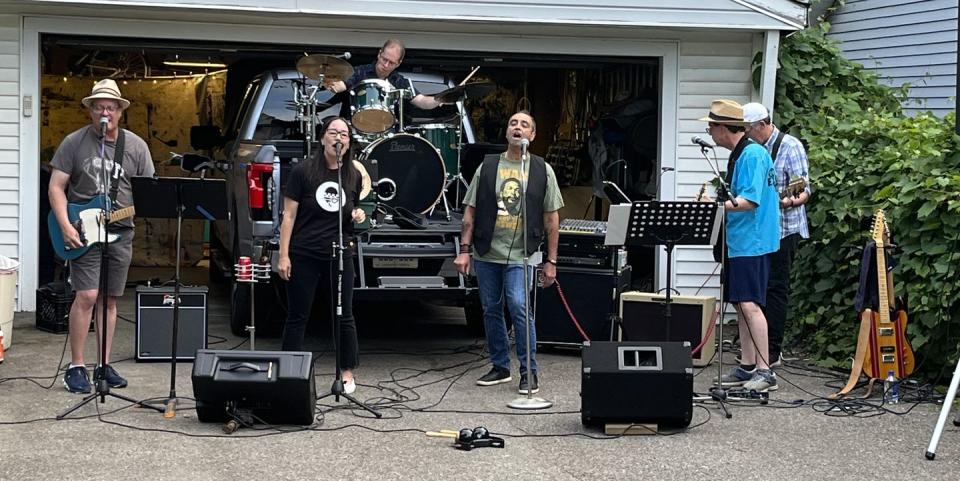
A Ford F-150 Lightning was on loan to Autoweek the same weekend when a band of Detroit auto writers would be playing a backyard party to kick off the summer.
With amplifiers and a sound system plugged into the truck, the question became, how long will the juice last? At the end of the night, will there be enough to drive the 30 miles back home?
Three Autoweek editors drove the Lightning 266 miles during the loan, and we used 80% of the juice for driving and only 8% for accessories, such as powering band gear.
Somebody had to do it.
The all-electric Ford F-150 Lightning doesn’t burn a drop of fuel, and it even offers multiple receptacles (both in the bed and the frunk) for plugging in lots of power tools and laptops at the worksite, coffee makers and toasters at a remote campsite, an entire house and another electric vehicle, and even a kitchen stove with a three-prong 240-volt plug.
You know what the F-150 Lightning can also power? Rock ‘n’ roll.
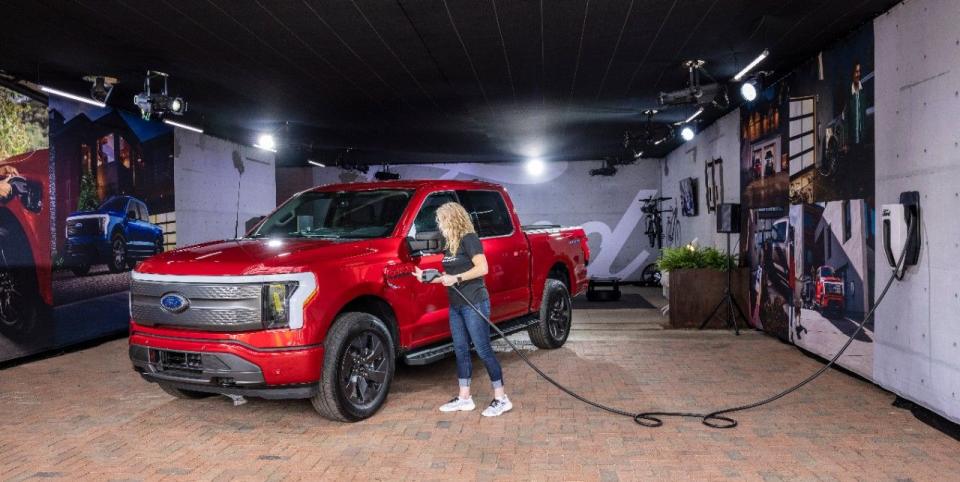
Some of us auto writers in Detroit formed a band 22 years ago called, appropriately, the Exhaust Tones, and it just so happened that an F-150 Lightning would be on loan to Autoweek the same weekend in late June when the band would be playing a backyard party to kick off the summer. How fortuitous for moving two giant PA speakers, three monitors, four amps, and lots of other gear.
We played this same party 11 years ago with the same dancing neighbors in the same backyard with the same garage with multiple receptacles for plugging in amplifiers and a full PA system. We could have plugged in through the garage the same way for this most recent party, but what fun would that be?
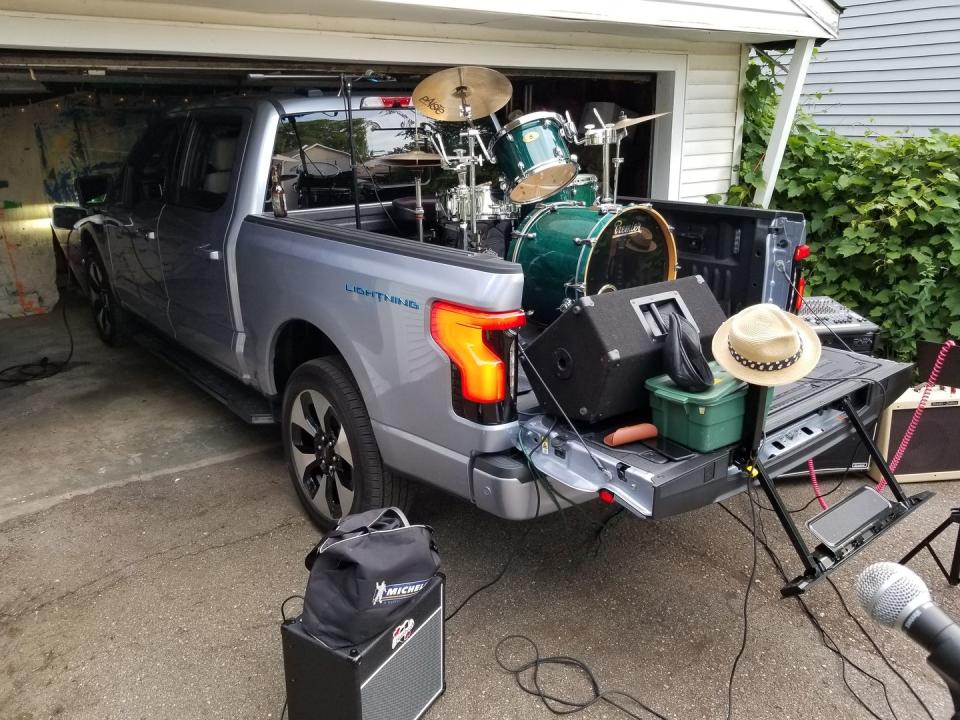
Instead, we nosed the truck (fully loaded with gear but well under the 1952-pound payload rating) halfway into the garage, confident we could power a wall of sound with the ample 131-kWh extended-range battery under the floor of the F-150 Lightning.
Better yet, one of our esteemed band members suggested putting the drummer and his kit right in the bed of the truck—not just for pictures but for playing the whole night. Every drummer needs a riser, especially one on four wheels and portable power, right?
From there, it was just a matter of using the touchscreen to switch on the juice at the receptacles in the bed, and plugging in all the gear. The Exhaust Tones were in business.
The question then became, how long will the juice last? At the end of the night, will there be enough to drive the 30 miles back home, carrying all the band gear?
Running two tube-powered guitar amps (30 watts and 40 watts) and two solid-state amps (for bass and PA), along with a 12-channel mixing board (using five channels for vocals) and a guitar pedal, we knew this might be a stretch for the Lightning. Our SuperCrew Platinum model came with a 9.6-kW Pro Power Onboard system with multiple 120-volt outlets: two in the cab, four in the bed, and four in the frunk, plus a 240-volt outlet in the bed.
During sound check, we did trip the truck’s onboard breakers a few times, using only the outlets in the bed, then realized we needed to spread the power draw to the receptacles inside the frunk. Once that was done, the power flowed like at a Rolling Stones concert, without blowing a 50-amp fuse.
The music started at 8 p.m. and we played a 75-minute set, without a hiccup—that is, the truck/generator performed flawlessly while some of us in this good-time amateur band missed a guitar lick or two. Throughout the first set, we checked the display screen (information that is easily accessible, thank you very much) to make sure we weren’t draining the battery too quickly.
For a short while during the first set, we plugged in the Lightning to a 120-volt wall socket in the garage, just for a bit of insurance. But it proved unnecessary to charge while at the same time consuming energy. After the first set, we immediately shut off all the band gear and the truck, and plugged in to the wall socket, for a trickle charge. We took a 30-minute break to enjoy the party and then fired up the truck and all the band gear for the second set, without being plugged in to the wall socket.
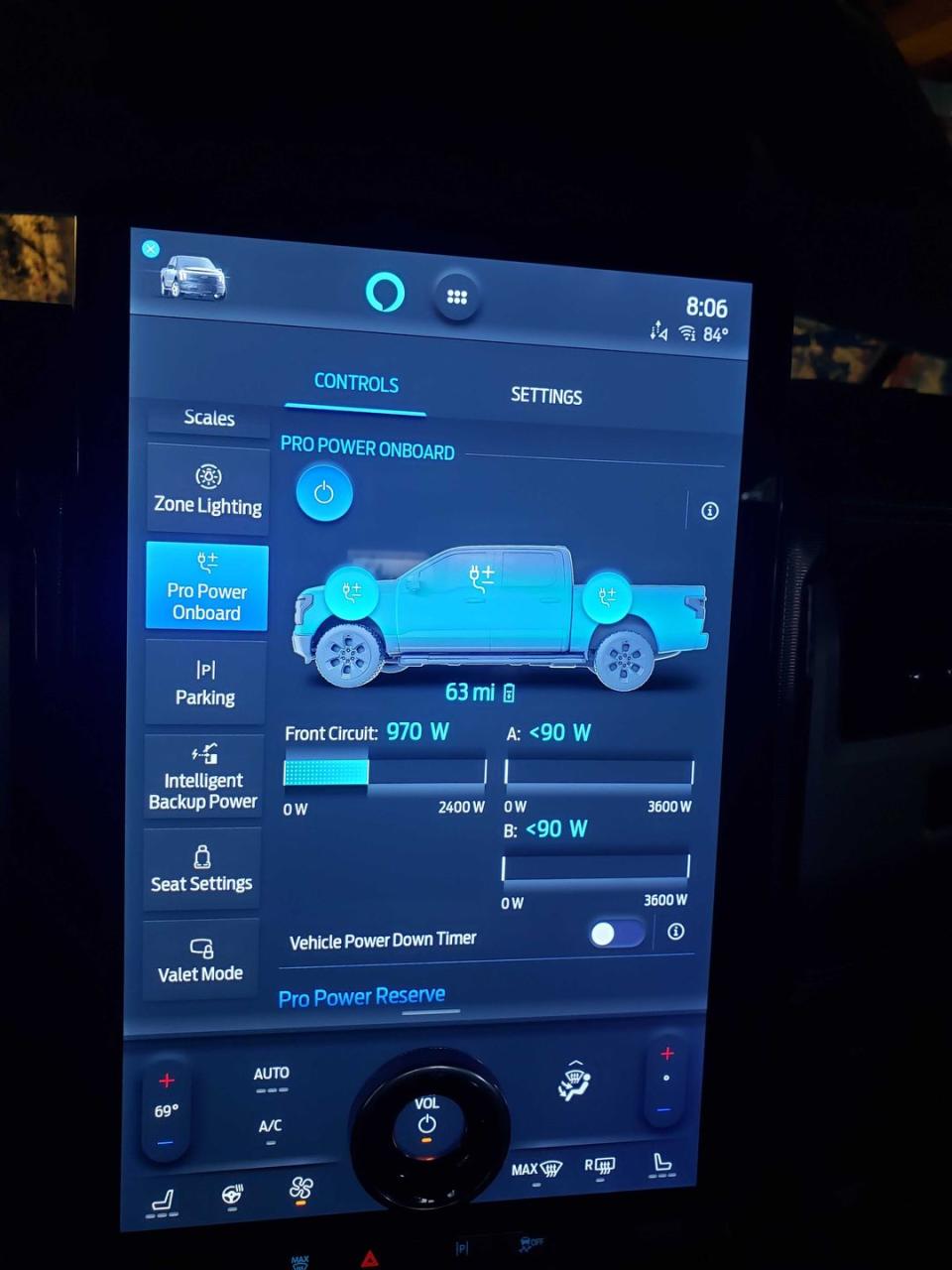
Everything was going swimmingly until we could hear crackling from one of the amps—mine—and it had to do with the gear, not the truck. The next challenge came courtesy of Mother Nature and the party’s proximity to the ample fresh water of Lake St. Clair, which spawns millions (maybe billions?) of fishflies about this time of year. They don’t like the heat of the sun, so they come out later in the evening and they really liked our drummer, as well as resting on my guitar, while being played.
Tired of all the swatting, we were ready to cut our set short when the party goers scoffed at the airborne pests and came to dance on the driveway in front of the band and the Lightning, pushing us on to keep playing until the 11 p.m. local curfew. It was a great time, and we shut down the power once again to conserve energy while we broke down all the gear.
It was then that we discovered how much juice we had consumed: barely any. We arrived at the party with just under 80% of remaining battery range. This dual-motor Platinum model (ambitiously sticker priced at $93,509) has an EPA-estimated range of 320 miles, and 75% of it (241 miles of range) was still there when we fired up the truck for the ride to the rehearsal space to unload the gear, then back home.
Rolling into the driveway about 2 a.m., the truck reported 66% of its range, enough for a 202-mile drive, perhaps for a roadtrip to the Rock & Roll Hall of Fame in Cleveland. Throughout the night, clearly we used more juice driving the F-150 Lightning about 70 miles than using the batteries onboard to power a rock band for three hours. During our 30-minute break that night, we didn’t need to plug into the garage’s 120-volt wall socket.
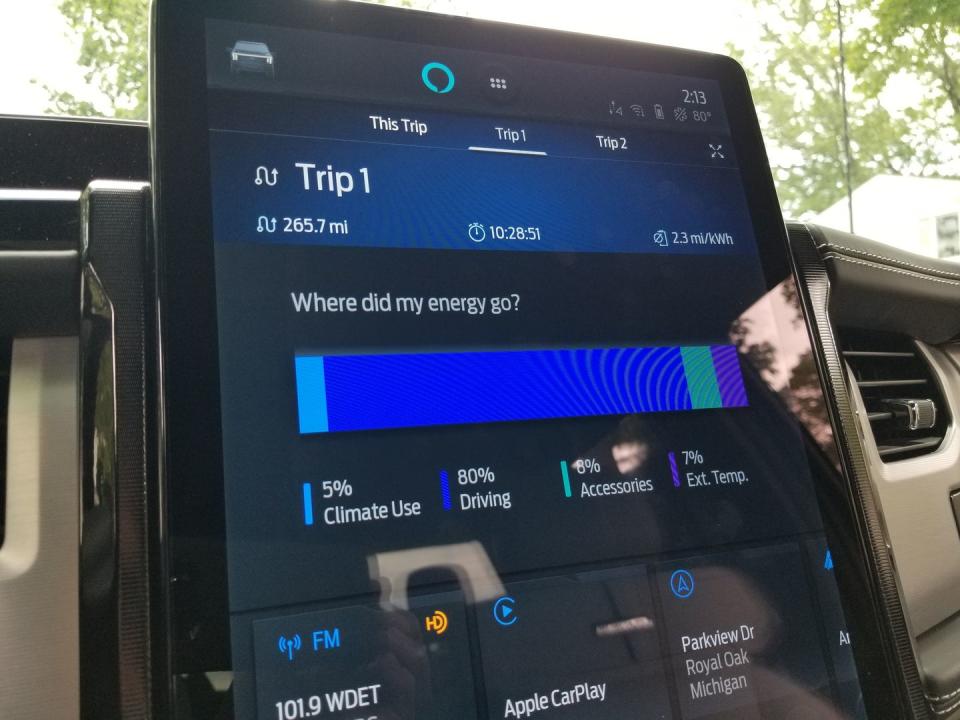
The Lightning’s display screen will provide as much information as needed, so a driver can learn the best ways to maximize the available energy. Three Autoweek editors drove the Lightning a total of 266 miles during the vehicle loan, and the display screen (pictured above) told us we used 80% of the juice during that time for driving and only 8% for accessories, such as powering band gear. Meanwhile, we averaged 2.3 miles per kWh of electricity, which isn’t great, but that consumption level is consistent with what we saw before we loaded up and headed to the gig.
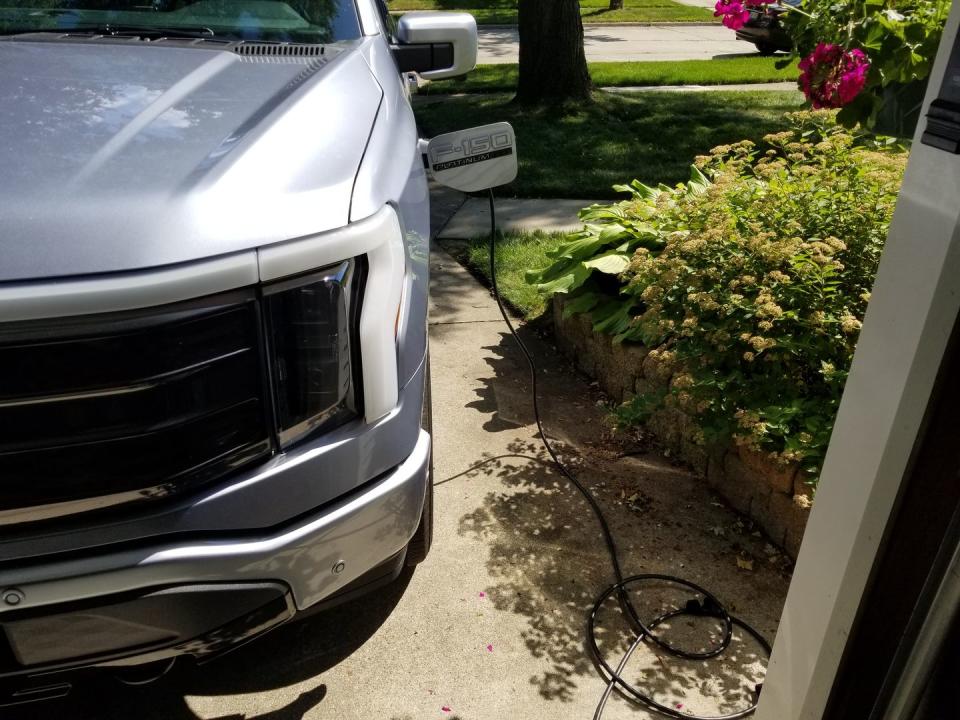
Also, we discovered the hard way that metro Detroit’s charging infrastructure—including fast chargers—needs improvement: Some of the charging stations we tried to visit were inoperable. Still, you can plug into a standard wall socket in the garage and gain valuable electrons overnight.
Better yet, if you don’t want to spring for a Level II charger at home, you can pay an electrician less money to add a three-prong 240-volt outlet (like for a stove) in your garage and use the adaptor supplied by Ford to charge up more quickly.
The arrival of mass-market electric vehicles has opened the door to all manner of creative experiments with battery-powered trucks and cars. In this particular test, the band was certainly louder than the truck.
What kind of clever plans do you have for tapping the F-150 Lightning's onboard electrical capability? Please share your comments below.

 Yahoo Autos
Yahoo Autos 